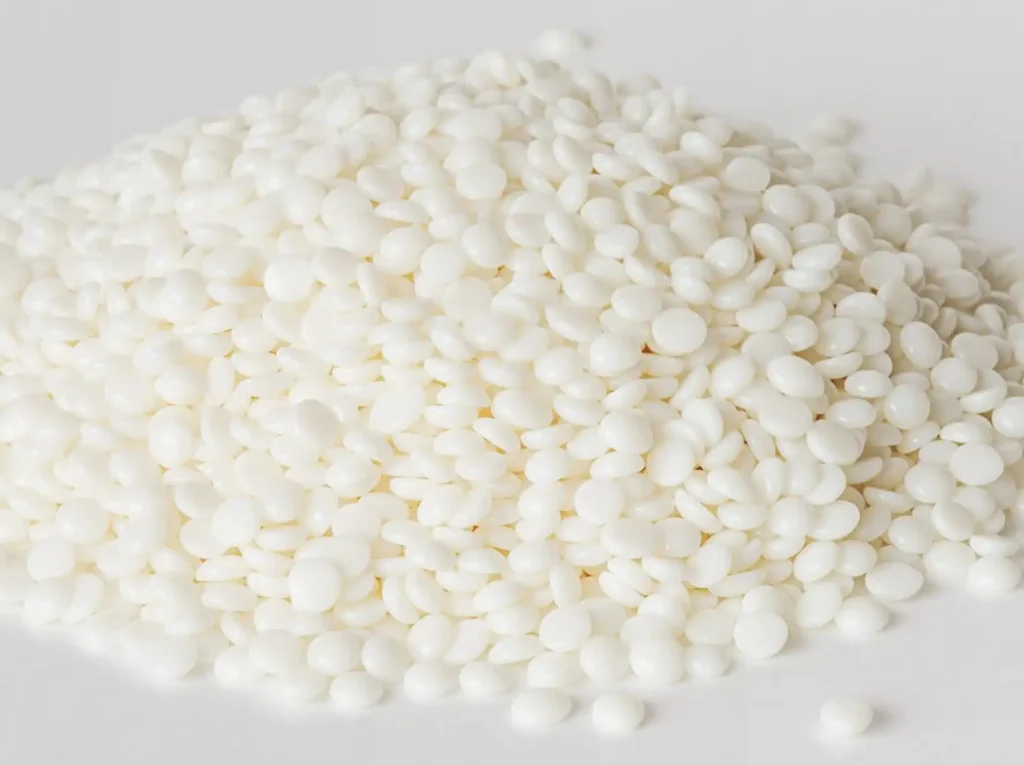The application of magnesium oxide (MgO) in PBT (polybutylene terephthalate) can significantly improve the material’s thermal stability. Thermal stability refers to the ability of a material to maintain its physical and chemical properties under high-temperature conditions. The heat resistance of a material is particularly crucial when it is used for extended periods in high-temperature environments. As a filler or additive, magnesium oxide can enhance the thermal stability of PBT in various ways. The following will detail the mechanisms by which magnesium oxide improves the thermal stability of PBT.

1. Increasing Thermal Decomposition Temperature:
Magnesium oxide has a high melting point (approximately 2800°C) and good thermal stability, allowing it to remain stable at high temperatures. Therefore, magnesium oxide can enhance the thermal decomposition temperature of PBT, delaying its thermal degradation process. When PBT material is exposed to higher temperatures, the addition of magnesium oxide can effectively reduce the rate of PBT’s thermal degradation, extending its service life. This is mainly due to the adsorption of magnesium oxide on thermal degradation products, which can reduce the release of harmful gases and inhibit the occurrence of degradation chain reactions.
2. Promoting Heat Conduction:
Magnesium oxide has high thermal conductivity (approximately 30 W/m·K), while PBT has relatively low thermal conductivity (approximately 0.2 W/m·K). After adding magnesium oxide to PBT, its thermal conductivity can help dissipate heat, thereby reducing the risk of localized overheating in PBT. Especially in PBT materials used in electronic devices and high-temperature environments, enhanced thermal conductivity helps improve the overall thermal uniformity of the material, avoiding performance degradation or failure caused by localized overheating.
3. Improving Thermal Oxidation Stability:
Magnesium oxide has strong antioxidant properties, which can inhibit the degradation of PBT in high-temperature oxidation environments. PBT is prone to oxidation reactions under the influence of high temperature and oxygen, leading to material embrittlement, color darkening, and performance reduction. As an inorganic compound, magnesium oxide can form a stable protective film on the material’s surface, reducing the reactivity of oxygen with PBT molecular chains and slowing down the oxidation process.
4. Inhibiting the Generation of Thermal Cracking Products:
During the thermal cracking process of PBT, the material’s polymer chains break down to form a series of low-molecular-weight products. Some of these products may promote further thermal degradation reactions. Magnesium oxide can interact with these cracking products, reducing the generation of harmful substances and thus inhibiting further degradation reactions. For example, magnesium oxide can adsorb substances such as water vapor or hydrogen, reducing their destructive effects on PBT molecular chains.
5. Providing Additional Structural Stability:
Magnesium oxide has a very stable crystal structure. Therefore, when it is added to PBT as a filler or reinforcing agent, it can enhance the overall structural strength of PBT. Magnesium oxide particles form a certain mechanical connection with the PBT resin matrix, which can resist the effects of thermal stress and reduce deformation or cracking in high-temperature environments. This structural stability helps PBT maintain good physical properties, such as tensile strength and impact resistance, at high temperatures.
6. Reducing Thermal Stress and Coefficient of Thermal Expansion:
In some high-temperature environments, thermal stress is an important factor in material failure. The coefficient of thermal expansion of PBT and magnesium oxide are relatively close, meaning that their thermal expansion properties are more similar in high-temperature environments. By introducing magnesium oxide, the internal stress caused by temperature changes in PBT materials can be reduced, thereby improving its thermal stability and resistance to deformation.
7. Synergistic Effects with Other Additives:
Magnesium oxide can not only improve the thermal stability of PBT alone, but it can also produce synergistic effects with other reinforcing materials (such as glass fiber, carbon fiber, etc.). For example, when glass fiber reinforces PBT, magnesium oxide can further enhance its resistance to thermal deformation and improve its mechanical properties at high temperatures. This synergy makes PBT more advantageous in high-temperature applications, especially in the automotive, electronics, and aerospace fields.
8. Promoting Stability After Heat Treatment:
PBT often needs to undergo heat treatment steps (such as injection molding, extrusion, etc.) during the manufacturing process. During these processes, the PBT material may undergo deformation or performance degradation. Magnesium oxide can stabilize the structure of PBT during the high-temperature treatment process, reducing deformation and improving its long-term thermal stability after processing. This allows PBT materials to maintain high performance even under complex processing techniques.
